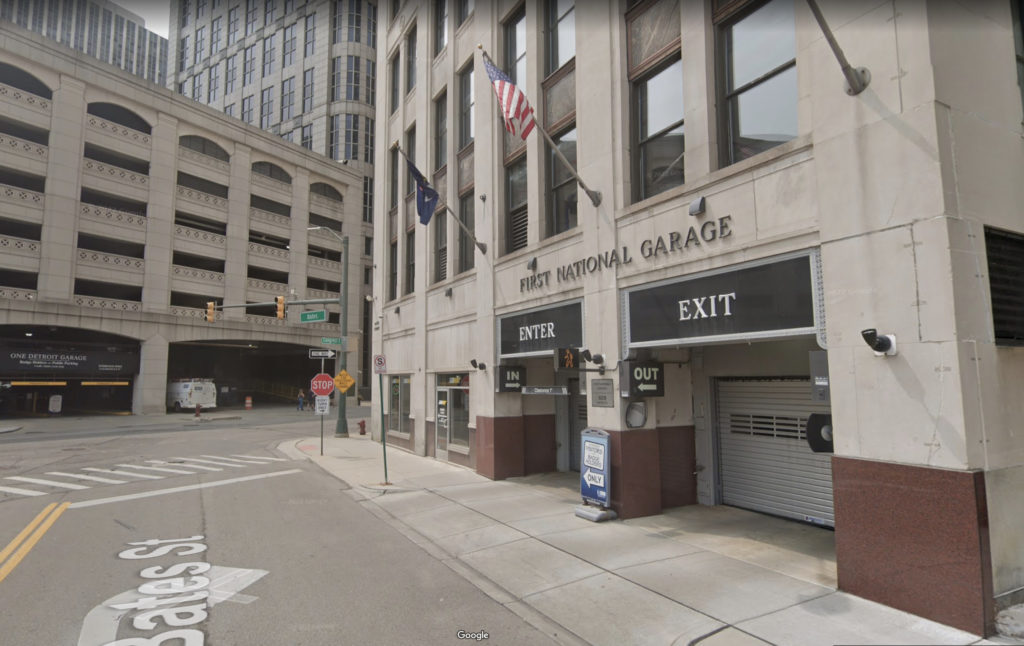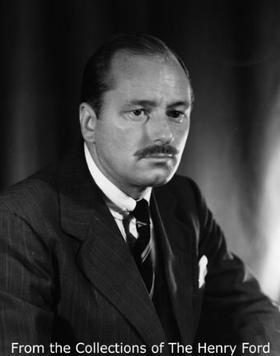Location of the Citroën Detroit Office in 1928

By Per Ahlstrom…..
It has been known that Citroën set up a Detroit office in 1928, but the location of it has been unclear. In this interview with Eugene T. Gregorie the location is pinpointed to the top of a National Bank parking garage on Cadillac Square.
An American, E. F. Fitzgerald, was the first manager of the Societé Anonyme André Citroën in Detroit[1]. The purpose was to test and buy components. The office closed in 1935, after Citroën’s bankruptcy. The last manager was E.R. Frederick, an American engineer who had been working in France.[2]
Citroën plays a somewhat mysterious part in Mr. Gregories reminiscences, as the reason for him to talk about the Citroën office in Detroit is that he owned a 5 CV Citroën, which he drove from New York to Detroit, where the Citroën mechanics serviced his car. He doesn’t say why he owned a Citroën or how he acquired it. It certainly was an odd choice of car for an American in 1928.
Here is an excerpt from the interview with Eugene T. Gregorie made by the Automotive Design Oral History project, Benson Ford Research Center, The Henry Ford.
“I went back to New York , to Long Island , to get my little French Citroën car–five horsepower Citroën. This was in early December, very cold, mean, so I went back one weekend and I started back with it for Detroit in the little convertible. No heater, cold, mean, and I got up into Pennsylvania in a little town called Hawley, broke a valve spring, went to a country garage. Talk about nerve driving a thing like that out there in those days! You couldn’t have gotten a part for that thing this side of Paris .
Q: What company was it? You said Citroën.
A: Citroën, little Citroën. It was their little bread and butter car. A little, tiny five-horsepower, didn’t have a…there was no starter, and didn’t have a fan, or a water pump, thermo syphon cooling. It was a real adventure to drive that thing to Detroit in the Winter. Well, anyway, I got to Hawley , Pennsylvania , and had a valve spring go out on it. I went to a little, country garage, and this old fellow took the valve spring out. It was all simple you know, it only took a few minutes to get at the valve spring. He said, “Well, this looks like an inner valve spring on a ’24 Buick.” This is a little, tiny inner spring. So, he got one out of a trash bin he had, and popped it in there, and he said, “By golly,” he says, “that’ll work.” So, he put the valve spring in, and Lord, the whole thing was a half hour, and two bucks, and I was on my way again. I did all right until I got up to a little place called Wayland , New York . It was about 40 miles below Rochester , and it had been snowing all day, and the snow had been laying in the fields but melting on the road. Along about 5 o’clock in the evening, it unknowingly had turned to a glaze of ice, and this little bugger spun around three or four times in the middle of the road and went over the corn field and laid on its beam ends.
Q: You didn’t have seat belts in those days?
A: No, and they only had one door–one door on one side. Fortunately, the side with the door was up. So, I had sense enough to reach down and turn the gasoline off. It had a gasoline tank in the cowl like a Model A Ford, and I cut the gas off before it set fire to the thing. So, I got out, crawled around, straightened myself up, and along came two farmers and a Model A Ford Touring Car, and in the back they had a big piece of rope. We hooked the rope on, and tipped it up right. The three of us tipped it up, pulled it up on the road, and he towed me into Wayland, about a mile. We put the car in a little country garage there. An old gal had a little farm house down the road, so I bunked in there for two or three nights. The morning after that the snow was four feet deep up over the windows, so I was holed up there for three or four days with this little car. I went to the country garage, the rear wheel was bent, and we put it in a press and straightened the wheel out. I was really tied up there five days, then I went on, finally, to Detroit . It took me about eight or ten days to get from New York to Detroit . It was so cold going across Canada in the little convertible, I had to take newspaper and caulk the window frames up. There was no heat, and every now and then I would stop at a country store and get a cup of hot tea. They always had hot tea in Canada . I’d stand there and warm my feet, you know. I finally got to Detroit , and things were rough there. There was no work anywhere. As it happened….
Q: This is the winter of…?
A: Winter of ’29 and ’30.
Q: Incidentally, you mentioned your Citroën a few minutes ago. Did you know that Andre Citroën visited Henry Ford at the engineering lab about 1928? [Citroën visited Detroit in 1931]
A: There’s a funny little story about that little car. While I had it in Detroit (1929-1930), I used to park it over in the National Bank garage across Cadillac Square, and I was going up one of the upper ramps there, and the French Citroën company were dealing with Budd, you know, the Budd people engineered that car, and they had a plant in Detroit, and they were in the process of, and were always continuously in the process of tinkering to use American components, you know, transmission parts and various things they could buy from this country. So, they had two or three French mechanics there, and they had a couple of Citroen cars there–front-wheel drive, you know, they used to build in those days [Ed. Note: Mr. Gregory is obviously wrong here, as the front wheel drive Citroëns were introduced in March 1934.] I went up there, and they saw that little car of mine. “Oh, the little Citroën, the Citroën, look, look, see the Citroën,” and I got to know these boys pretty well, you know, and they said, “You no work, you want tune him up, fix him up,” so boy, they took that little car, and they tuned it all up nice for me. That was their basic, little car in Paris , you know, in France , and that was kind of a cute arrangement. Oh gee, they loved that little car. First one they’d seen since they left Paris , and they came out to the house one day, and, oh boy, they ground the valves, and they did all kinds of work. They had special metric tools, and you couldn’t get metric wrenches in this country in those days, and that was a real tie-in. That was cute, they were cute, little guys, and they had their jumpsuits and their bottles of wine up there, you know, and they had a regular little shop there that had a little bay that they’d rented, you know. Chain and hoist, they could change parts on the car there, and it was kind of handy, but that was a great little car. I drove that back to Long Island again that June, and I took the original fenders off of it, and I put Ford Model A fenders on it.”
Eugene T Gregorie was born in 1908 in Long Island, New York. He first made a name for himself as a yacht designer. In 1928 he took a job with the famous coach builder Brewster & Co in New York, where he learned automobile design. In 1929 he went to Detroit to look for work in the automobile industry. He got hired by General Motors, but this was at the height of the great depression and after a couple of months he was laid off, being the last one hired. He got by doing some work on yachts until he got a call in December 1930 from the Lincoln Motor Company, which needed an automobile designer.
Edsel Ford hired him in the beginning of 1932, and his first assignment was to design a Ford for the British market, a car which became known as the model Y.
Gregorie and Edsel Ford made a good team and were responsible for a number of classic designs, the most well known being the 1936 Lincoln Zephyr and the Lincoln Continental.
Gregorie retired from Ford in 1946, as he didn’t get along with the new management. He moved to Florida where he made a living designing yachts. He died in 2002, 94 years old.
[1] Detroit The Free Press, Detroit, Michigan, October 20 1931
[2] Detroit Free Press (Detroit, Michigan) · 22 Feb 1938.


